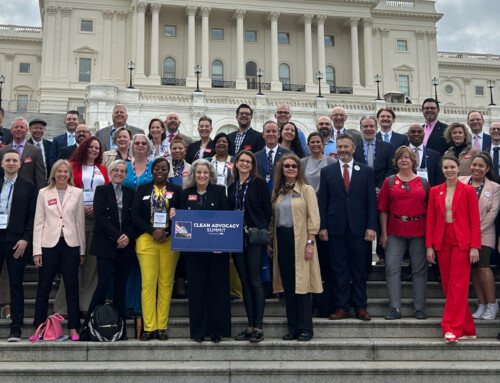Update on VOC Regulations
As we approach the end of the year, it is important to note the numerous changes to volatile organic compound (VOC) regulations that will occur at the beginning of 2023 throughout North America, and which will impact the formulation of multiple cleaning product categories. This article provides an overview of some of the more substantial changes to VOC regulations on the near horizon.
California Air Resources Board (CARB)
California, through its regulatory agency, CARB, implements the most stringent VOC regulations in the nation. Most recently, CARB has approved a new round of amendments to its existing “Consumer Products Regulations” that impact household and commercial cleaning products alike.
Effective for products manufactured on or after January 1, 2023, CARB has introduced four new categories of “air fresheners” to replace the existing categories, each of which has a VOC limit as set forth below:
- Manual Air Freshener 10%
- Automatic Aerosol A/F 30%
- Concentrated Aerosol A/F 15%
- Total Release Aerosol A/F 25%
Be sure to review the definitions for the above air freshener product categories available in the current Consumer Product Regulations
In addition, CARB has introduced a new product category, bed bug insecticide, and has assigned to it the following VOC limitations effective for products manufactured on or after January 1, 2030:
- Bed Bug Insecticide (all forms) 20%
- Bed Bug Insecticide (aerosol) 15%
In this most recent round of rulemaking and of greatest significance to the formulator community, covered products manufactured on or after January 1, 2031 will no longer be able to use the 2% Fragrance Exemption. Air fresheners, disinfectants and sanitizers will receive a limited 0.25% fragrance exemption. On the other hand, general purpose cleaners (non-aerosol) and general purpose degreasers also get a 0.25% fragrance exemption though these product categories must take into consideration monoterpenes.
New York
In 2022, New York revised its regulations to be consistent with the OTC Phase IV Model Rule developed by a multi-state coalition called the Ozone Transport Commission (OTC). That rulemaking resulted in numerous new VOC limits having become effective at the beginning of 2022. In addition, as part of that rulemaking, the following new VOC limits are effective for products manufactured on or after January 1, 2023:
- Disinfectants (aerosol) 70%
- Disinfectants (non-aerosol) 1%
- Sanitizers (aerosol) 70%
- Sanitizers (non-aerosol) 1%
Ohio
Ohio has completed its recent rulemaking by which it also has adopted the OTC Phase IV Model Rule. The new VOC limits established by Ohio are effective for covered products manufactured on or after July 1, 2023 (July 1, 2024 for Disinfectants and Sanitizers) and are summarized below:
- Dual Purpose Air Freshener/Disinfectant Aerosol 60%
- Anti-Static Product (aerosol) 80%
- Auto Windshield Cleaner 35%
- Bathroom and Tile Cleaner (non-aerosol) 1%
- Brake Cleaner 10%
- Carburetor Intake Cleaner 10%
- Disinfectants (aerosol) 70%
- Disinfectants (non-aerosol) 1%
- Engine Degreaser (aerosol) 10%
- Floor Polishes, Waxes
- Resilient Flooring 1%
- Non-Resilient Flooring 1%
- Furniture Maintenance (non-aerosol) 3%
- General Purpose Cleaner (aerosol) 8%
- General Purpose Degreaser (aerosol) 10%
- Laundry Starch/Fabric Finish 5%
- Multi-Purpose Solvent 3%
- Nail Polish Remover 1%
- Oven/Grill Cleaner (non-aerosol) 4%
- Paint Thinner 3%
- Sanitizer (aerosol) 70%
- Sanitizer (non-aerosol) 1%
Colorado and Michigan
Michigan and Colorado are contemplating changes to their respective VOC regulations for consumer and commercial products, with the former also looking to adopt rules for architectural and industrial maintenance (AIM) coatings.
Michigan’s VOC regulations are currently aligned with the OTC Phase II Model Rule. It now plans to update to the more recent Phase IV rule, according to representatives of the air quality division of the Department of Environment, Great Lakes and Energy (EGLE). A final rule is scheduled for adoption by March 2023.
By contrast, Colorado is looking to become the first state to adopt the Phase V OTC Model Rule for consumer and commercial products. Doing so would make it home to the most restrictive requirements in the US outside of California.
Colorado’s existing Regulation 21 is based on the OTC Phase IV Model Rule, but the state’s public health and environment department is “evaluating” transitioning to the more recent model. If adopted, it would bring in tighter limits for adhesives, air fresheners, carpet cleaners, lubricants and many other products.
Canada
Canada’s Volatile Organic Compound Concentration Limits for Certain Products Regulations come into force on January 1, 2023 to allow for the application for permits and the building of compliance units one year in advance of the coming into force of the product limits. Maximum VOC Concentration Limits and Emission Potentials for the manufacture and import of products listed in the schedules to the regulations will come into effect on January 1, 2024, for all product categories, except disinfectants, which come into effect on January 1, 2025.
The new Canadian VOC limits are based on California’s CARB 2010/2013 amendments except that not all definitions and provisions are perfectly aligned between the two sets of regulations.
Canada has made certain resources available on the topic of its new VOC regulations including:
- Factsheet;
- Analytical methods for determining VOC concentrations; and
- Text of the Canadian VOC Regulation.

















